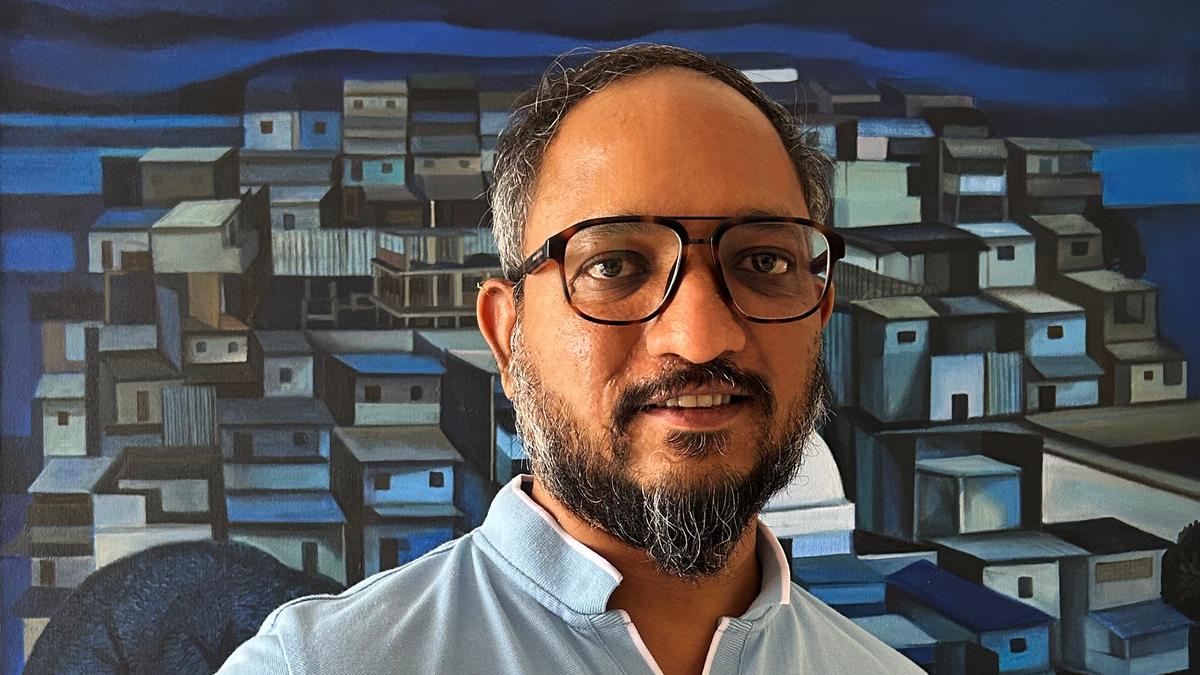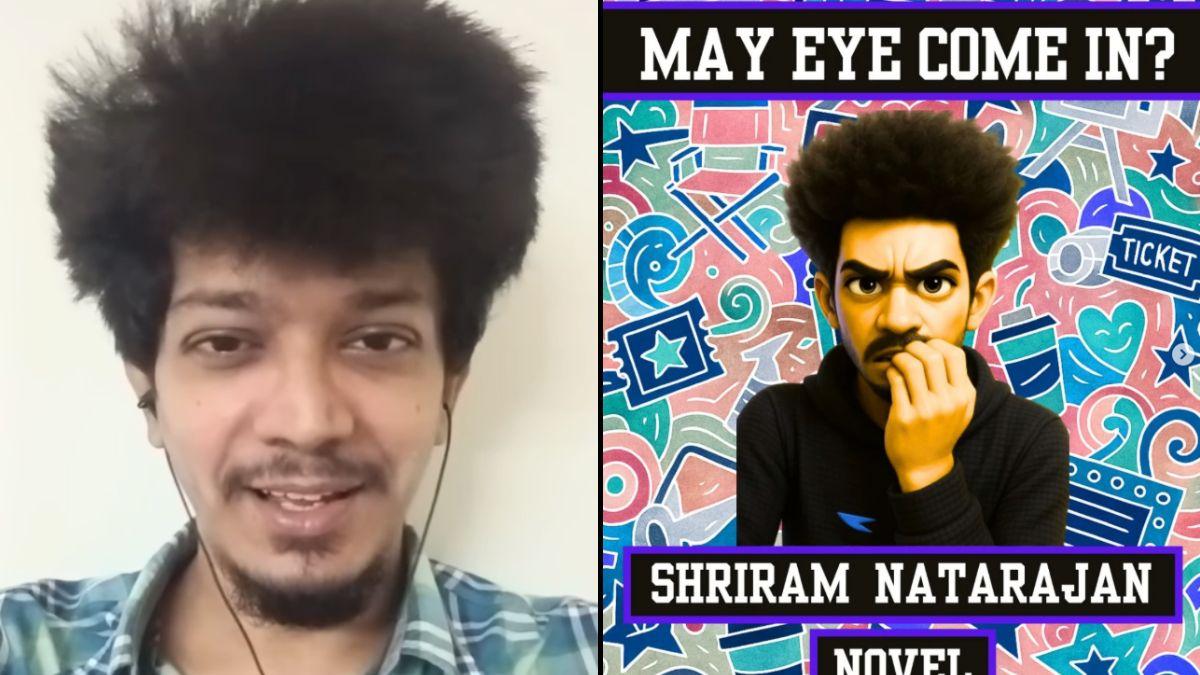When Vikrant Bhise, 40, had his first big South Mumbai show, Hum Dekhenge (We Will See), in 2024, he gave the politically somnolent neighbourhood a booster shot of hidden-in-plain-sight history.
“Lots of people from the movement came,” the multi award-winning painter recalls. There was everything from Ambedkari jalsa (anti-caste protest poetry and songs) to Dalit Panther magazine archives that belonged to its co-founder Raja Dhale, and other invocations of Bhim, a rallying cry for Ambedkarites.
Residents of Ramabai Ambedkar Nagar chawl in suburban Ghatkopar stood in front of his paintings of the 1997 riot where police fired on those protesting the desecration of a statue of B.R. Ambedkar, and soaked in the portraits of the 10 victims. “That’s my uncle,” one visitor told Bhise.
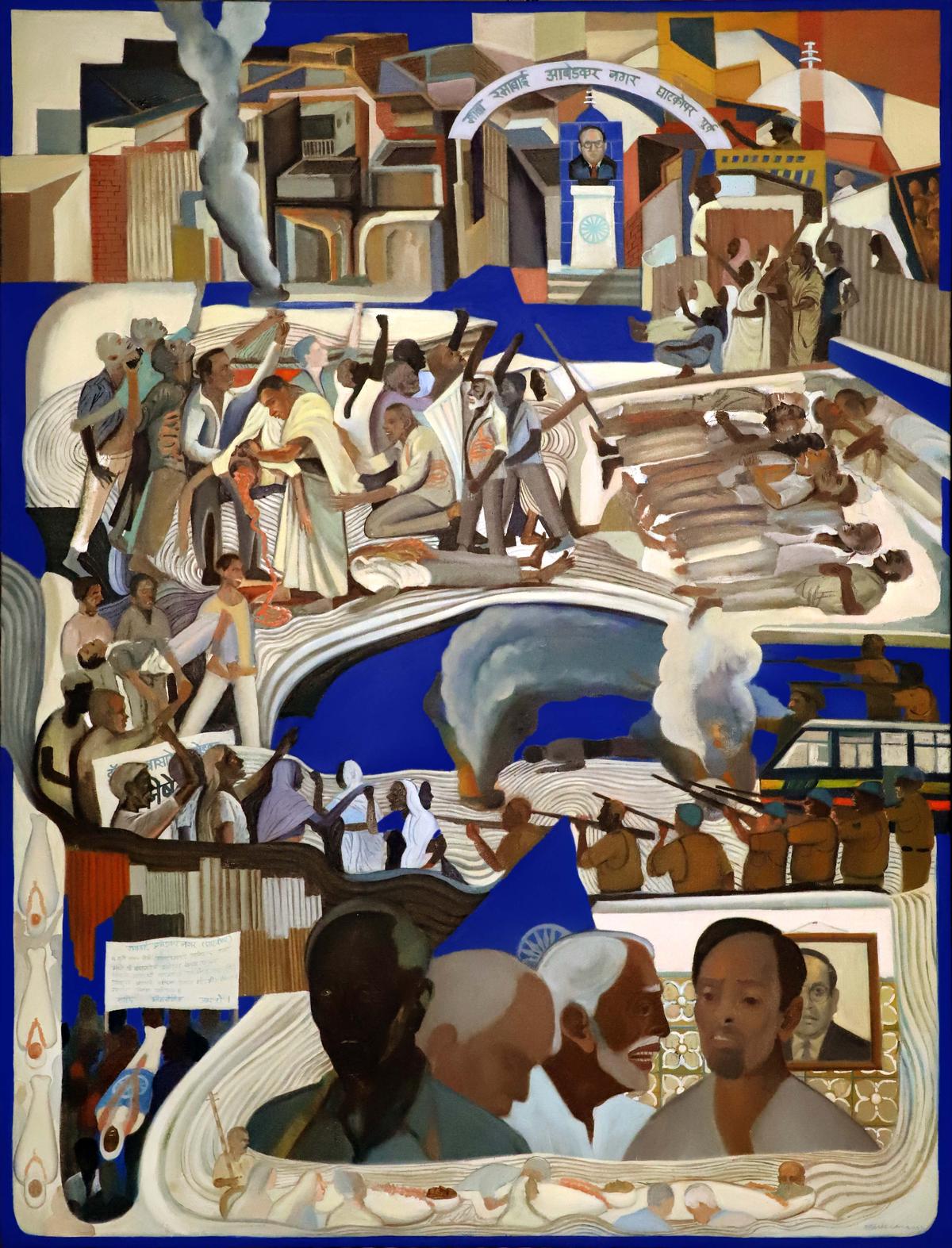
Bhise’s painting on the Ramabai chawl riot. It is titled ‘Where is Manohar Kadam’ (Kadam is the policeman who ordered the firing on the Dalit protesters).
It was an important moment for an artist who is driven to paint the unseen and untold. “This is my calling,” says Bhise, who witnessed the riot from his uncle’s house. “These are my stories.” His work seems even more urgent at a time when these histories are being deliberately erased and/or co-opted.
Some visitors said they didn’t know such things had happened in Mumbai and that too “so recently”. Now you understand why the artist is on a mission to take our 3,000-year history of caste-based oppression to a wider audience and disillusion those who believe the caste system is dead.
Pain, people and protest
Bhise is prolific. He may set out to make 50 multi-layered works and end up with 120 as it happened with Archival Historicity, inspired by Dalit Panther pamphlets from the 1970s and showcasing their inspiration, the Black Panther Party, founded in California in 1966. (The series is ongoing; Bhise sees it as his “daily diary”.) Some of these works were acquired and are on permanent display at the Asian Art Museum in San Francisco.
At his first solo show in Noida in 2023, there were some 400 works, including a 16×10 foot mural of the 16-year-long Namantar struggle that centred around renaming a university in Maharashtra’s Aurangabad, and the 10-panel ‘Quest For Justice’ inspired by protests past and present that stretched across 40 feet. “When I see the works of Renaissance painters, they’re mostly about war and fighting, about the depiction of real things,” he says. “This is our renaissance.”
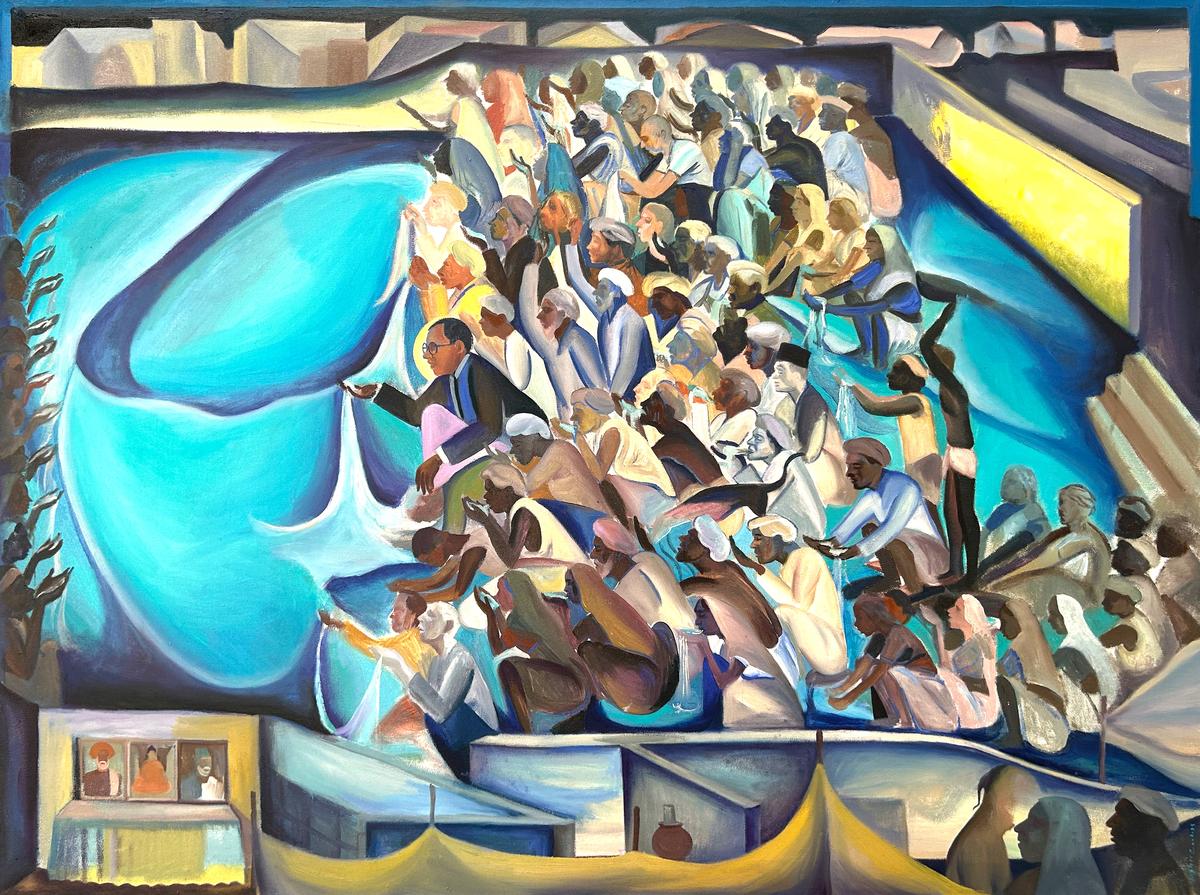
Bhise’s painting on the Mahad Satyagraha.
On display at the just-concluded Summer Berlinale were five panels or 20 feet of the Mahad Satyagraha, the 1927 non-violent movement led by Ambedkar for the right to access public water. Change is here, but its pace is not enough for the artist. “We keep thinking how far we’ve come,” he says. “But it’s been 100 years and only one community does the waste collection and sanitation work.”
From the precarious lives of workers to scholars driven to suicide by casteism, all find representation in Bhise’s labyrinthine artworks bursting with pain, people and protest. Bodies are entwined in conflict and change in paintings with shades of blue that range from the palest sky to the deepest indigo.
Painting untold histories
While Bhise’s works have always centred caste, labour, poverty and justice, it was only after the citizenship protests in 2019, the COVID-19 lockdown, and the farmers’ protests, that he began painting Ambedkar, a leader who was invoked in all of these moments. “Wherever there is injustice, there is Ambedkar,” Bhise says. His first portrait in 2021, titled Labour Leader, was of a worker using a rag to wipe a statue of Ambedkar. The man cleans the statue with his right hand as his left hand rests over Ambedkar’s eyes. You could say it represents the uncovering of hidden history.
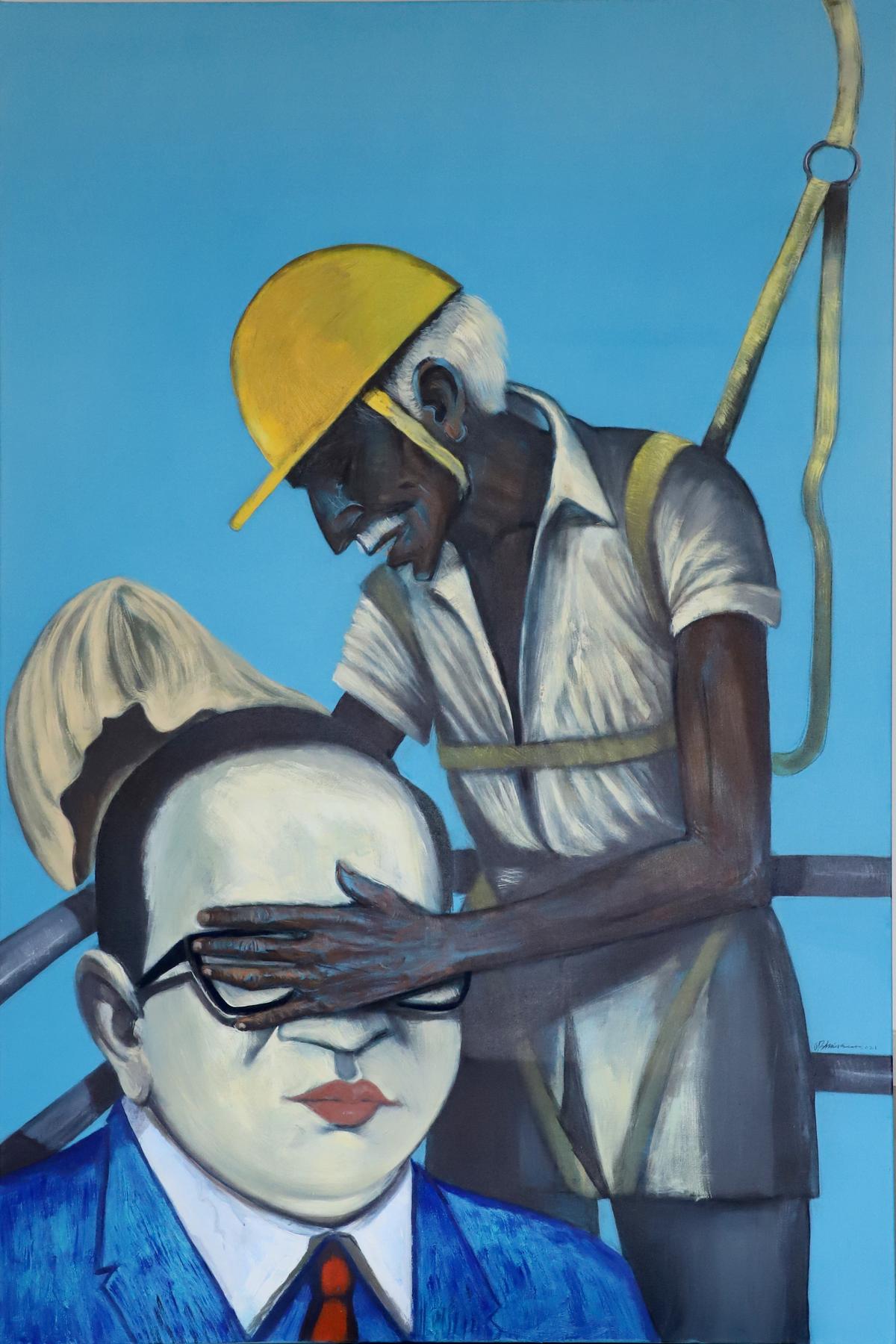
Bhise’s first portrait, titled ‘Labour Leader’.
‘Who killed Nitin Aage?’ Bhise asks this question in the title of a painting about an intercaste love affair that ended in the brutal murder of a teenager. Like Aage, Bhise fell in love with a Maratha woman, Siddhi, who he met in art school, and they married despite family opposition. Now he dodges their four-year-old twins, Abir and Kabir, instructing them to stay away from his materials, as he paints in the midst of his fatherly life, grabbing every chance to work. “There’s no waiting for the right mood,” he says.
He also spotlights the everyday joy and inspiration a community relies on in the midst of oppression, whether it’s the annual gathering at Mumbai’s Chaityabhumi, where Ambedkar was cremated; or humanitarian idols such as Jyotiba and Savitribai Phule; a euphoric indigo representation of a Jayanti; or the red wall of his parents’ home. “I want people to see Ambedkarite lives,” he says. “Our houses are also different, our food, our literature, our living style, the colour palette…”
Recently, his paintings have been displayed at prestigious venues such as Art Dubai and Art Basel. Coming up are Bergen Assembly in Norway and Frieze London, among many others. “My works were shown in 20 group shows last year,” he says, still slightly incredulous about the growing interest in his art.
It was after the Noida show that the art world really embraced Bhise’s stories. All the years of working with a courier company until he took a big leap to follow his passion and study art, and then a long stint as an art teacher and tutor, have finally paid off. Now he can devote all his time to painting the histories that nobody told us about.
The writer is a Bengaluru-based journalist and the co-founder of India Love Project on Instagram.
Published – July 11, 2025 07:05 am IST
